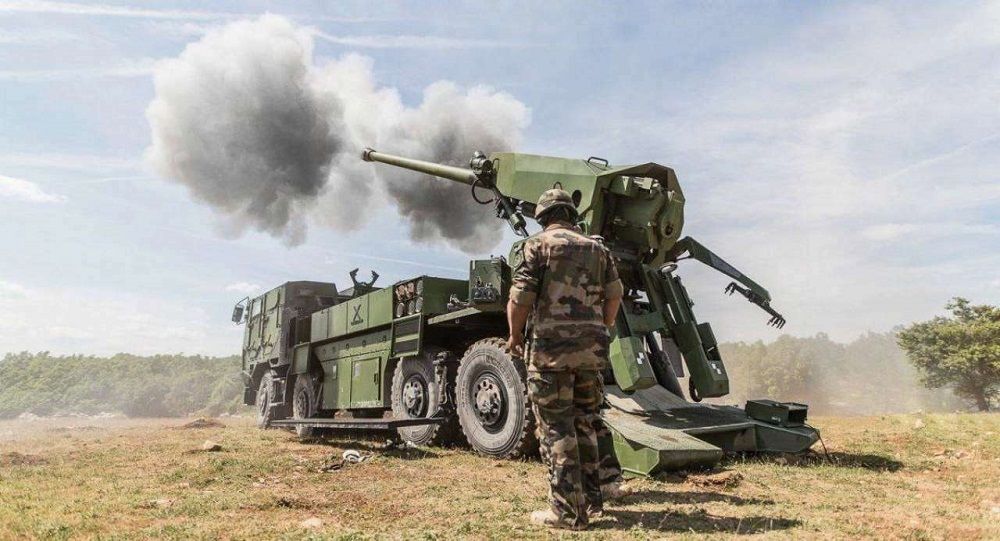NATO's policy shift that happened on 24 February must be seen in the context of the defense support provided in the years leading up to the invasion -- which was close to nothing. The support rendered since has been impressive, but not at all unprecedented.
According to SIPRI, the US disbursements to Afghanistan between 2001 and 2020, totaled $72.7 billion in current dollars ($81.6 billion in constant 2019 dollars). Nearly all (99.2%) of this military aid came from the DOD, through the Afghanistan Security Forces Fund (ASFF; $71.7 billion in current dollars) created by the US Congress, and a separate Train and Equip Fund ($440 million in current dollars). Together the two funds provided the ANDSF with equipment; supplies; services; training; funding for salaries; and facility and infrastructure repair, renovation, and construction. This does not cover military aid given to Afghanistan by other donor countries such as Germany, the United Kingdom, and other North Atlantic Treaty Organization (NATO) allies.
Deliveries from the USA to Afghanistan from 2001 included an estimated 21 924 armored vehicles (e.g. HMMWV-UA, ASV-150/M-1117), 66 MD-530F armed light helicopters, 34 Cessna-208B armed light transport aircraft, and 53 UH-60A transport helicopters, SIPRI
reports. The USA also delivered 65 ScanEagle (unarmed) unmanned aerial vehicles and an estimated 250 Paveway guided bombs.
Afghanistan was, however, not fighting the world's second strongest military power. It was not invaded by a neighbor country and was not immersed in a fight for its existence. Still, it has received far more support (over 20 years) from one benefactor than Ukraine has received from more than thirty so far.
Ukraine denied what it needs to win
Additionally, Ukraine is still being denied the capacities it needs to win.
Since the West is unable to agree on what a Ukrainian win looks like (and some countries even argue in favor of ceding territory to Russia), I base the statement on the Ukrainian definition of a victory:
The present NATO strategy does not support Ukraine's strategic aim. In the worst case, it does not even support the idea of an independent and sovereign Ukraine.
This is not for the lack of political intentions, but rather for the lack of a military strategy supporting its declared aim and objectives (as obscure as they are).
There are four areas of concern.
- Ukraine lacks the means to meet the threat in all three dimensions.
- There is an obvious imparity in long-range weapons on the battlefield.
- NATO does not seem to grasp the long-term implications of the maritime blockade in the Black Sea.
- The USA and Europe are fast running out of time.
The defense aid packages should help determine the outcome of the war. While the support is impressive – but not unprecedented - it is still limited in scope. Until now it has only helped reduce the speed of the Russian advance in the east. It has not stopped it. While the defense support most probably has denied Russia any hope of capturing Kyiv and a greater part of Ukraine, it is not sufficient to stop Russia from defeating Ukraine.
Russia does not need to occupy all of Ukraine to defeat it. It only needs to break “its back.”
The Western support does not offer Ukraine the tools it needs to evict Russia from Ukraine or break the maritime embargo, both of which are crucial to achieve a Ukrainian victory (and deflect a defeat). Its international partners only offer Ukraine support to its Land Forces, but no Navy or Air Force. The latter can only be achieved through direct intervention by NATO or a Coalition of the Willing. A one-dimensional defense is insufficient to deter and defeat a three-dimensional assault.
Two days ago, however, President Biden announced that the United States, allies, and partners are working to implement an alternative scheme for exporting grain from Ukraine by rail, as a means to “unblock maritime trade.” The implication of this decision is far more dramatic than meets the eye.
This means that NATO has been deterred by Russia from entering the Black Sea to conduct either a Freedom of Navigation Operation or a Humanitarian Intervention to break the maritime blockade. The fact that there neither road nor railways will be able to shift more than 10% of the capacity of ships, means that the plan does not in any way resolve what will become global famines.
Equally crucial, the maritime blockade is fundamentally challenging the economic viability of the Ukrainian state. Even if Ukraine succeeds in evicting Russian forces from Luhansk, Donetsk, Zaporizhzhia, and Kherson, it will still be defeated if it remains unable to ensure imports and exports through its ports.
The lack of long-range artillery and MLRS have been extensively covered by several recent statements and analyses. The 1:10 ratio in artillery duels and the quickly depleting ammunition stocks that will soon render parts of the Ukrainian artillery useless give a new sense of urgency in both upholding and increasing the flow of weapons to Ukraine.
When will NATO really help Ukraine?
The ”tsunami of ripple effects from the war” adds further urgency to the situation. For the last four months, I have attempted to convey the message that the war has been a part of a broader confrontation between Russia and the West for years already. It is not a war we can choose to become engaged in or not. Russia has already made that decision for us. We either face the challenge alongside Ukraine or face the long-term consequences of being “defeated.” The effects of a Ukrainian defeat will be utterly devastating for European security, stability, and prosperity.
[bctt tweet="West does not have luxury of choosing whether to get engaged in Russia's war against Ukraine. Russia made that decision for us. We either face the challenge with Ukraine or face the consequences of defeat, which will be devastating" username="EuromaidanPress"]
This understanding is not only crucial as we define our strategy for supporting Ukraine and defeating Russia. It is also essential as we prepare the population in the West for the hard time that will follow the Russian-induced confrontation. That’s a cost more easily to bear if they know the fundamentals of what's at stake.
Additionally, I have been warning about the ”tsunami of ripple effects from the war.” This is clearly highlighted in the article “As prices rise, Europeans are divided over how the Ukraine war should end”:
“As the war in Ukraine drags on through its fourth month, Europeans remain largely united in backing Kyiv, but they are divided over how long they’re willing to endure the conflict’s economic fallout.”
This will impact the future prioritization of the European leaders. Ending the war becomes increasingly important. The present NATO strategy, however, does not support this aim.
Western strategy and support must be seen in this context. Doing something must not be misinterpreted as doing what is needed.
Sitting “idle” waiting for the tsunami of consequences to increase in scale to a point where it will “cause political, economic and geopolitical chain reactions that will be impossible to predict and difficult to control” does not make sense. But that is what Europe and the USA seem to be doing.
Let's hope there are processes ongoing that the public is not privy to. Let's hope Ukrainian soldiers are already training on advanced combat aircraft. Let's hope anti-ship missiles are already being fitted to small, highly maneuverable vessels capable of bringing the battle to the Black Sea Fleet. Let's hope Ukraine is about to receive the artillery and MLRS they urgently need. Let's not at least hope that Ukraine will soon receive the Air Defence systems they need to defend the civilian population and its armed forces.
Let's hope our leaders have fully understood what is at stake.
Related:
- Russia must not get another “Minsk agreement” in Ukraine
- Russia’s war with Ukraine affects billions. NATO could end it in a moment.
- Race against time: Ukraine runs out of ammo, calls for MLRS, artillery – US “willing to provide” everything needed
- Russian war crimes: “denazifying” Ukrainians through deportation, torture, detention and filtration camps





